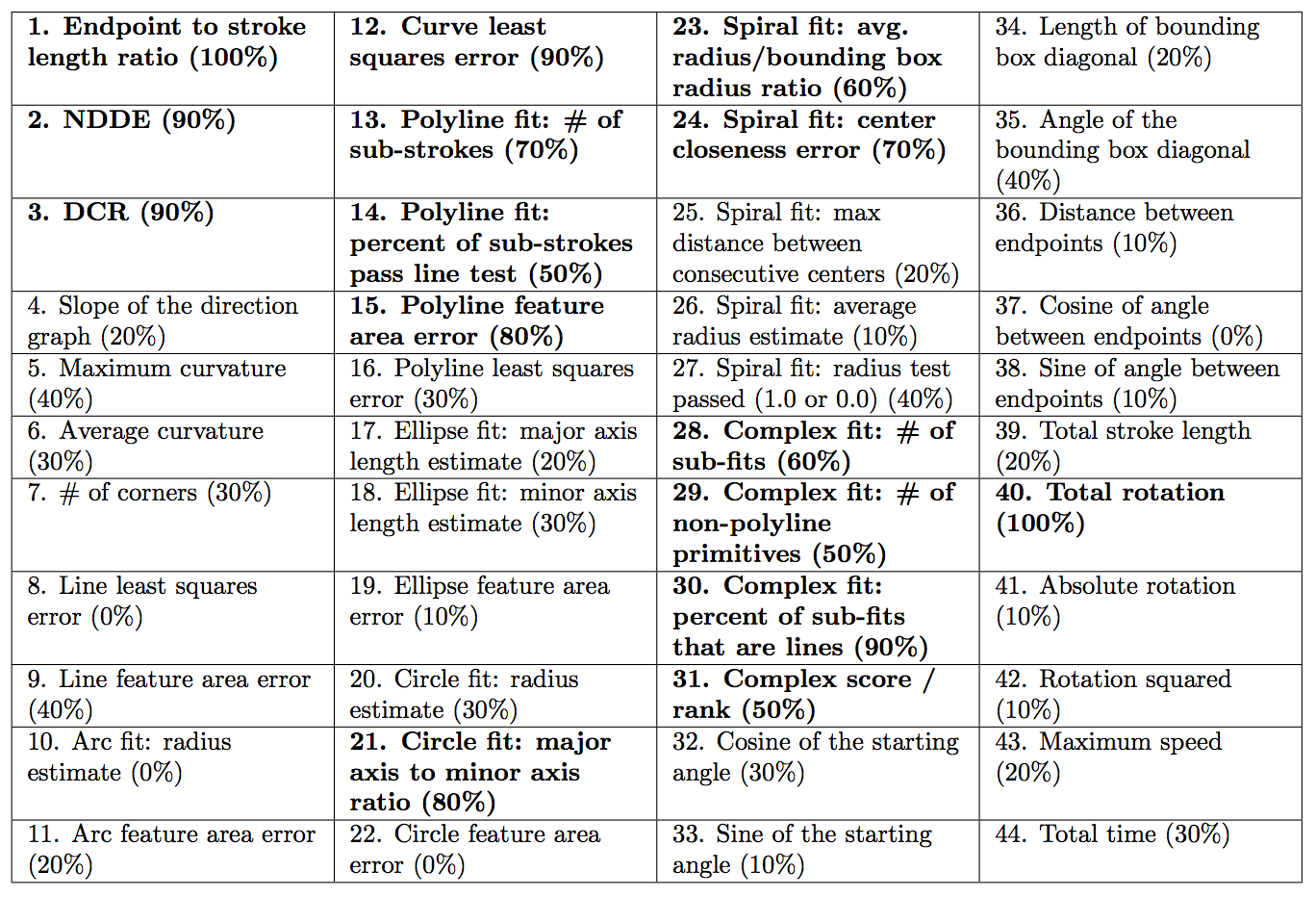- Entropy
- Each point in a stroke is assigned a symbol based on the angle (corresponding angle in the Table 1)
In this figure, text has various symbol compared to rectangle.
- This symbol is the random variable on the basis of which we can calculate entropy.
- Use a zero-order entropy
- each symbol's probability of occurrence is determined independent of the previous symbols.
- Define an entropy model 'alphabet'
- Implementation
- Stroke Grouping
- A spatial and temporal threshold
- The successful rate: 99.78%
- After groping
- Resample
- Transform each stroke into a string of symbols
- Calculate the percentage of the occurrence of symbols
- Classification
- Confidence Measure
- in order to integrate a classifier into other sketch recognition
- Data collecting and Testing






















